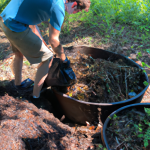
Homestead Food Preservation Techniques
When it comes to homesteading, one of the most important skills to possess is the ability to preserve food. It not only ensures that you have access to nutritious meals throughout the year but also allows you to become self-reliant in times of uncertainty. In this article, we will delve into various food preservation techniques suited for homestead living, so you can take control of your food supply and be prepared for any situation.
1. Canning
Canning is a classic method of preserving food that has been used for centuries. It involves packing food into sanitized jars and sealing them with a lid. The heat from the canning process destroys bacteria, yeasts, and molds, ensuring long-term food storage. Whether it’s fruits, vegetables, or even meats, canning allows you to enjoy your homegrown produce far beyond its natural season.
To get started with canning, you’ll need a pressure canner for low-acid foods like vegetables and meat, and a water bath canner for high-acid foods like fruits and jams. Follow the recommended guidelines for processing times and temperatures to ensure safety.
2. Dehydrating
Dehydrating is a simple yet effective method of food preservation that removes the moisture from fruits, vegetables, and meats, preventing the growth of harmful microorganisms. It allows you to reduce the weight and size of your food while preserving its nutritional value. Dehydrated foods are lightweight, easy to store, and have an extended shelf life.
You can dehydrate food using an electric dehydrator, an oven set at a low temperature, or even by air drying. Slice the food into thin, uniform pieces for even drying and store in airtight containers to prevent moisture regain.
3. Fermenting
Fermenting is not only a great way to preserve food but also enhances its flavors and nutritional content. Through the process of fermentation, sugar in the food is converted into acids or alcohol by beneficial bacteria or yeast. This preserves the food and creates an environment that inhibits the growth of harmful bacteria.
Sauerkraut, kimchi, and pickles are common examples of fermented foods. To ferment food, you’ll need a salt brine or a starter culture to promote the growth of beneficial microorganisms. Allow the food to ferment at room temperature for a specific period, depending on the desired taste and texture.
4. Freezing
Freezing is a quick and convenient method of food preservation that maintains the natural flavors and textures of the food. It involves storing food at sub-zero temperatures to slow down the growth of microorganisms. Freezing is an excellent option for fruits, vegetables, and even cooked meals.
To freeze food properly, blanch vegetables before freezing to preserve their color and texture. Package the food in airtight containers or freezer bags, removing as much air as possible to prevent freezer burn. Keep your freezer at a constant temperature to ensure maximum freshness.
5. Root Cellaring
Root cellaring is an age-old technique of preserving fruits, vegetables, and even some root crops over an extended period. It involves storing the produce in a cool, humid environment, such as a root cellar or basement, to slow down the spoilage process.
The key to successful root cellaring is maintaining the right temperature and humidity levels. Vegetables like potatoes, carrots, and onions should be stored separately in well-ventilated containers or crates. Regularly check for spoilage and remove any rotten produce to prevent it from affecting the rest.
Conclusion
Mastering the art of food preservation is essential for anyone pursuing a homesteading lifestyle. By canning, dehydrating, fermenting, freezing, or root cellaring your produce, you can ensure a steady supply of food that will sustain you and your family throughout the year. Embrace these techniques and take control of your food security, so you can thrive in both good times and challenging situations. Remember, being prepared is the key to self-reliance.



GIPHY App Key not set. Please check settings